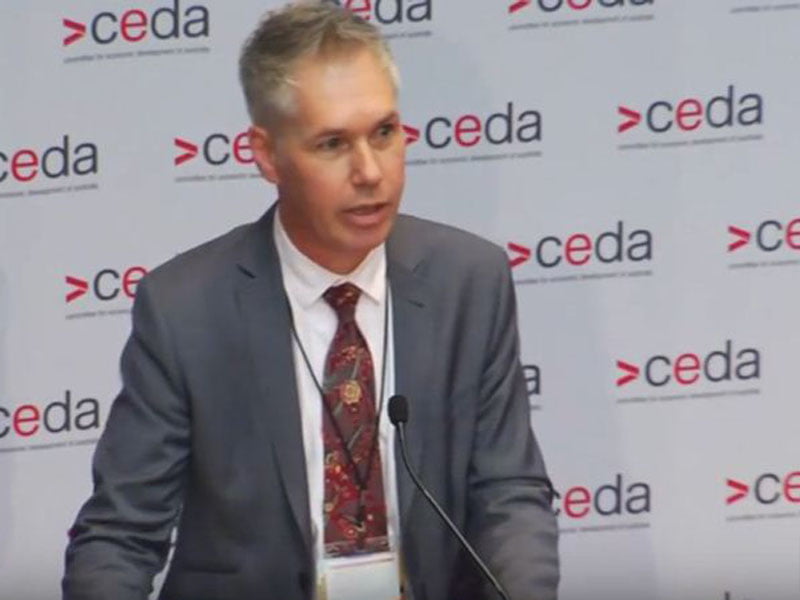The latest report card on Australia’s business smarts describes a country that is good at employing innovative techniques but poor at producing the big value breakthroughs.
The 2016 Australian Innovation System report comes out of Mark Cully’s Office of the Chief Economist inside the Department of Industry, Innovation and Science. It’s a good sized tome, running to over 120 pages and seeks to measure the pulse of our innovation-active businesses.
The report says Australia ranks relatively well on general entrepreneurship and innovation measures, but poorly on new-to-market innovation.

The report found a slight drop in private sector innovation with 45 per cent of all Australian businesses being innovation-active in 2014-15, down from 48 per cent in 2013–14, although the decade trend in being innovation active is positive.
More alarmingly, Australia’s new-to-market innovation is poor compared to other OECD countries.
“After matching to OECD definitions of business size and sector, the data suggests that Australia is not an innovation leader but an innovation follower,” the report says.
“Compared to 31 other OECD countries, Australia, at nine per cent, ranked 23rd for the year 2012–13. This ranking largely reflects the activity of SMEs (with 10–249 employees) at nine per cent. Large businesses (with 250+ employees), also at 9 per cent, rank even lower at 29th out of 30 OECD countries.”
The University of Technology Sydney’s (UTS) Business School dean Roy Green agrees Australia tends to be more of follower than a leader when it comes to innovation.
He believes part of the problem lies in our comparatively low level of economic complexity, a problem also mentioned by the Innovation System Report.
Australia is ranked last of 35 OECD+ countries on economic complexity, the measure of how well an economy can hold and combine knowledge.
“We are in a category of high GDP but low economic complexity along with countries like Qatar, Saudi Arabia and Oman,” says Professor Green.
Prof Green also believes poor management quality is a factor in Australia’s innovation picture and says business and government need to pay more attention to training up our managers in 21st century techno-entrepreneurial skills.
While the report says Australia ranks high on product or process innovation, with large businesses ranked 3rd in the OECD and SMEs ranked 8th, our pizzazz factor is low when it comes to innovation in marketing and organisational methods only.
Australia ranks 30 for large businesses and 31st for SMEs out of 33 OECD countries.
In this mode of innovation, there was little variability in Australia’s OECD rank between manufacturing (28th) and services (29th).
Australian SMEs ranked first in the OECD (at 43 per cent) for product or process and marketing or organisational innovation. Even though a higher proportion (50 per cent) of large businesses in Australia innovated in this way, they ranked 13th in the OECD.
The Innovation System report lists the three main barriers to innovation for all sorts of business and the trio is no surprise – it boils down to bucks, bodies and costs.
Getting access to additional funding topped the list of innovation barriers for 18 per cent of firms, followed by a lack of skilled people for 16 per cent and the costs associated with innovation development for 13 per cent of firms.
Punch through those barriers and the benefits of being an innovation happy outfit are clear. On average, the report found that every dollar invested in innovation returned two dollars in sales. The report found that innovation-active businesses outperform non-innovation-active businesses by large margins.
Innovation-active businesses make up 45 per cent of all employing businesses but contribute to over 60 per cent of sales and employment. They are 40 per cent more likely to grow income and profitability and twice as likely to build export ability.
Innovation-centric firms were twice as likely to report productivity increases, three times more likely to report higher employment and three times more likely higher to have structured training for employees. They were five times more likely to make social contributions to our economy.
There could be help on the way from the US to lift Australia’s game from innovation follower to leader.
Australia could see an inflow of American talent in the wake of Donald Trump’s shock US presidential victory.
“It’s already happening,” says Professor Green.
“We are getting calls from some of America’s leading academics to come and work with us here at UTS and I think other universities will be getting similar calls. It’s the same with industry and the tech startup scene”
Do you know more? Contact James Riley via Email.

